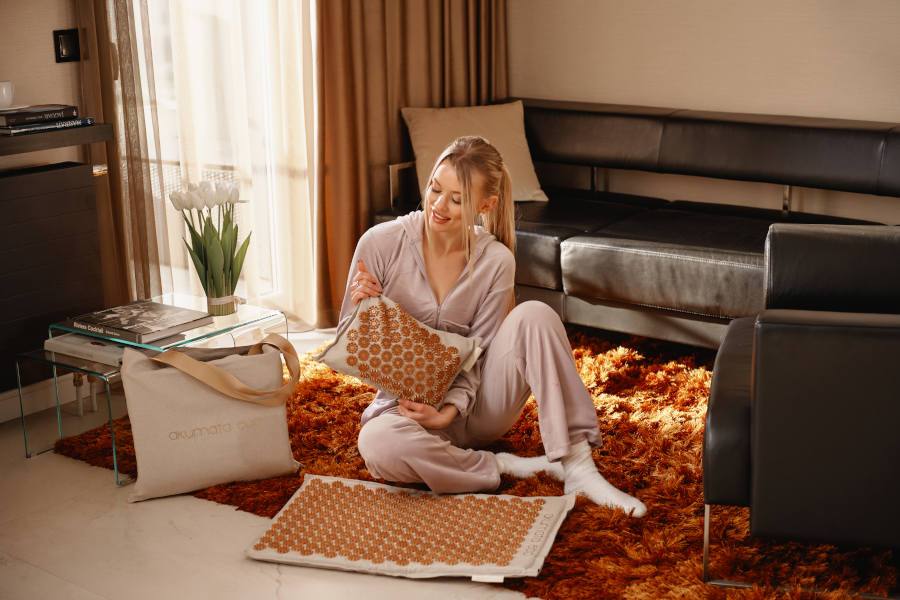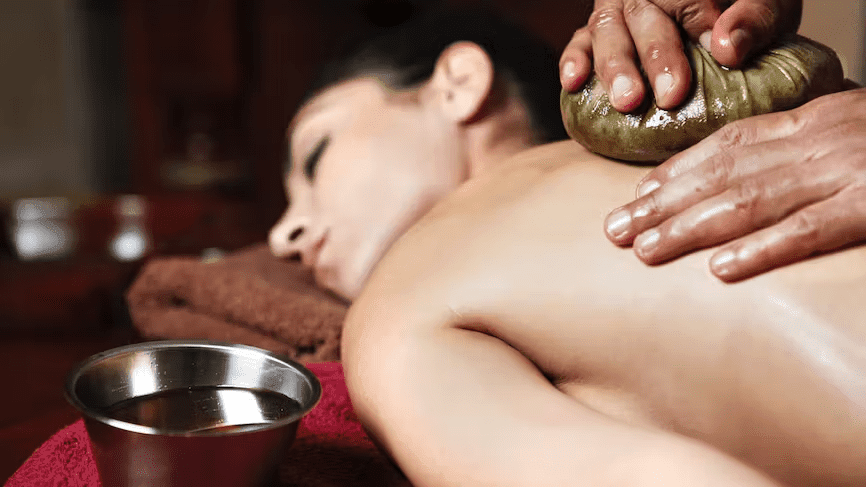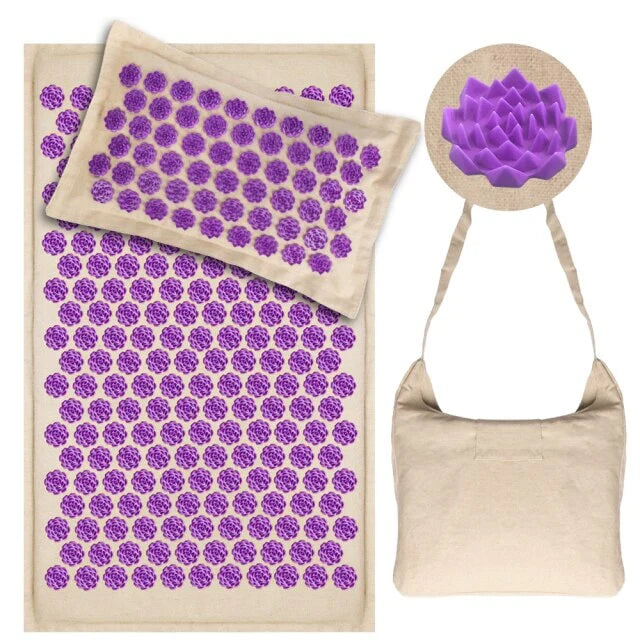An integral part of traditional Indian medicine, Ayurvedic or Abhyanga massage helps you achieve well-being and relaxation by rebalancing your doshas in an individualized way. The origins and principles of massage, its physical and psychological benefits, how it works, duration, price, reimbursement... here's everything you need to know about Ayurvedic massage before getting started.
Ayurveda offers a unique traditional massage technique, practiced by Indians for thousands of years. In India, Ayurvedic massage is practiced throughout society. In United States, it's widely acclaimed for its relaxing virtues... and its many other benefits.
Origins of ayurveda and ayurvedic massage (abhyanga)
Ayurvedic massage, also known as abhyanga, is an integral part of ayurveda, the traditional Indian medicine, in the same way as ayurvedic yoga, phytotherapy, aromatherapy and dietetics. From the Sanskrit ayur (life) and veda (science or knowledge), the term ayurveda means "knowledge of life or longevity".
Much more than a health system, Ayurvedic medicine in India is an art of living in its own right, designed to provide the best possible care for our entire body and mind. Massage is regarded as an essential body therapy for healthy daily living. Daily massage of babies and their mothers over a long period of time is common in post-natal care. Children are also encouraged from an early age to massage other family members.
"From the age of six, children are encouraged to massage other family members. Similarly, a woman who has just given birth and her baby will receive a daily massage from birth for 40 days".
In United States, Ayurvedic massage is not considered a therapeutic massage, but a simple tool for well-being, relaxation and well-being.
What is the principle behind traditional Ayurvedic treatment?
Ayurveda considers that the infinitely small (human beings, molecules) are governed by the same principles as the infinitely large (planets, galaxies). By observing nature, the Indian sages discovered five elements: ether (or space), air, fire, water and earth. They deduced that these states of matter, present in nature, were also present in human beings.
In humans, these five elements constitute three doshas or biological humors (dosha vata, dosha pitta, dosha kapha) whose combination is unique to each individual. When these three are balanced, the individual is in good health. An imbalance, on the other hand, can eventually lead to illness.
Ayurvedic massage focuses on harmonizing the five forms of vata and prana, to restore balance to disturbed doshas.
Vata is one of man's biological humors.It symbolizes the force of space and air that governs five biological movements (metabolic rhythms): heartbeat, intracellular exchanges, breathing, toxin elimination and the sympathetic nervous system. This force circulates through the large intestine, bladder, bones, skin, ears and thighs.
Prana symbolizes the intelligence of life, or the fundamental force at work in any healing process.
Why consult an Ayurvedic masseur-relaxologist?
In India, in all Ayurvedic medical treatises, massage appears not only as a body therapy, but above all as a daily lifestyle practice.
In United States, Ayurvedic massage is practiced for its relaxation and well-being, and for its relaxing virtues: "Beyond its physical benefits, this act of love and attention will, through touch, nourish the body, senses and soul at all ages of life", says the Association. Practitioners recommend this massage for its many benefits, which are:
- Improving blood and lymph circulation, helping to eliminate toxins and increase and release the flow of oxygen to tissues;
- Tone and relax muscular tissues;
- Preserve and nourish skin tissue thanks to the oil used during massage;
- Improve the body's immune response;
- Enhance body awareness, giving a feeling of lightness and energy;
- Improve posture by making joints and spine more supple;
- Increase sexual vitality and strength.
- It also relieves stress, improves sleep and reduces fatigue.
How is Indian Ayurvedic massage performed?
Ayurvedic massage is performed on a massage table or on the floor. The patient is usually covered with a sheet, which is used to gradually uncover the parts to be massaged. Each massage is individualized according to the predominance of the client's doshas and imbalances.
- The vata (air) type: the massage will be slow, enveloping, regular and grounding, using a warm, nourishing oil to pacify and reassure the person.
- The pitta (fire) type: the massage will be stimulating, rapid and deep in a warm atmosphere. Less oil is used for a more refreshing massage.
- The kapha (water) type: dry massage or massage with very little oil will be highly stimulating to reactivate the lymphatic system, activating your stagnant lymphatic system and your aptitude for lethargy.
Depending on the imbalance, different types of massage are used: energetic full-body massage, head or foot massage with oil, as well as energetic or non-energetic massages with powdered dried plants, cereal or legume flours, cloth bags filled with rice or plants, etc.
Pressure, sweeping, tapping, rubbing... the varied techniques are performed mainly with the hands, palms, elbows and forearms. "Don't hesitate to ask your practitioner about the different types of massage available, so you can choose the one that suits you best".
Which oil for Ayurvedic massage?
Oils, vegetable balms or butters, or plant powders are often used for massage.
"The various Ayurvedic massages can be performed with two or four hands (sometimes more), with or without oil, or using different substances such as plant powders, cereal or legume flours, essential oils, cloth pouches filled with rice or plants, etc."
Sesame oil is traditionally used for Ayurvedic massages. Renowned for their energizing and balancing properties, cinnamon and basil oils can also be used in synergy with sweet orange, patchouli and amyris oils. Ginger, black pepper or turmeric oils can also be used, depending on the type of massage, the person receiving it, etc.
"The masseur-relaxologist will take your pulse or observe your tongue before starting the massage, so that he or she can best choose the oil and type of touch that correspond to your specific needs," explains the Association.
As far as clothing is concerned, all you need is comfortable underwear that you're not afraid of staining with oil (if your massage involves oil).
What are the contraindications to Ayurvedic massage?
Massages in general are contraindicated in cases of :
- Skin inflammations;
- Dermatological disorders;
- Swelling;
- Bruises;
- Tears;
- Fractures.
In cases of serious illness or cancer, massage is not always recommended. Ask your doctor for approval.
Massage is also not recommended after recent surgery (less than three months) or when the body contains too many toxins. Massage is not recommended for people with fever or heart problems.
How does an Ayurvedic massage session work?
The massage session always begins with an Ayurvedic assessment to determine your natal constitution (the original combination of your doshas) and your state of imbalance.
The assessment is based on observation, touch and questioning:
- Examination of pulse, tongue, eyes, skin and nails;
- Information about your lifestyle, the state of your digestion and elimination (stool, urine, sweat), your diet, your sleep, your mental and emotional functioning;
- Consideration of your medical history.
Following this assessment, the practitioner determines the most suitable massage according to your dosha dominance (vata for air, pitta for fire, kapha for water).
After the massage
The masseur-relaxologist will also advise you to drink plenty of hot water after an Ayurvedic massage, to help evacuate the toxins released by the massage and take full advantage of its benefits.
How to choose your ayurvedic masseur?
Ayurvedic massage is not a recognized therapeutic practice, nor is it taught as such in American medical or physiotherapy faculties. Ayurvedic medical advice is not a substitute for appropriate medical treatment.
What training is required to become certified?
Some private institutes award diplomas in Ayurveda after one to four years of study, which include the study of Ayurvedic massage. These courses are not officially recognized by the American state. It is therefore advisable to choose your practitioner from the directory of a recognized professional association, such as the Ayurveda Association in United States.








